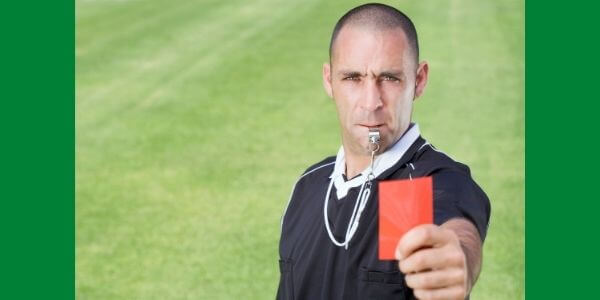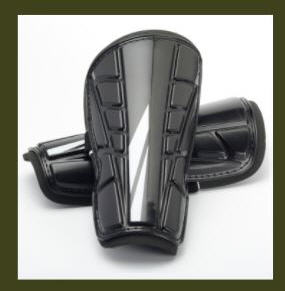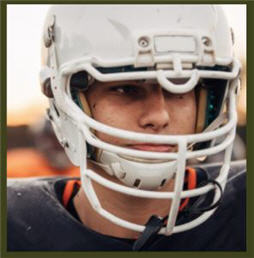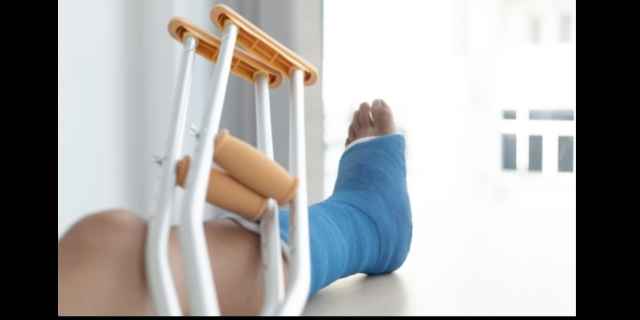Rugby players traditionally wear their socks rolled up to the knee. So, it’s not obvious if they are wearing shin pads.
If you’re getting ready to join a club session for the first time, you may be wondering if you should go and buy a pair. But you probably shouldn’t grab the nearest pads in the sports shop. They may be illegal.
Read on…
Is it Legal for Rugby Players to Wear Shin Guards?

The short answer to this question is yes, as long as they meet certain criteria.
The rules for shin guards in Rugby Union are set out in the World Rugby Regulations.
“A player may wear shin guards worn under the socks with padding incorporated in non-rigid fabric with no part of the padding thicker than 5mm when compressed.”
World Rugby, Regulation 12
What this means in plain English is that the rules allow soft, non-rigid, non-bulky, shin pads only. Legal rugby shin protection is probably better described as a shin pad than a shin guard.
What happens if you wear illegal shin pads?

It’s important to pick shin pads that conform to the rules. An official can decide at any time during or before a match that an item of equipment is dangerous or illegal.
If a player is seen to be wearing illegal shin guards, either in a pre-game equipment inspection or during the game, the player will be asked to remove them.
The player will not be allowed to continue to participate in the match until the illegal shin guards are removed.
If the player was told in the pre-match inspection to remove a set of illegal shin guards but is caught wearing them during the match, that player can be sent off for misconduct.
What Type of Shin Pads are Not Allowed in Rugby?
When you hear the words “shin guard”, the classic soccer shin guard is probably what comes to most people’s minds.

These have a rigid plastic outer shield that is lined with closed-cell foam padding and may or may not also have a cloth covering.
These types of shin guards are absolutely not allowed under the rugby rules. They violate the “non-rigid” requirement of Regulation 12.
Even if they are contained in a padded sock, or if padding is put on the outside of the plastic shield, they are not legal to use for rugby.
The same is true of shin guards for field hockey, ice hockey, and baseball.
NFL shin pads are probably not allowed in rugby
Shin protection is still generally rare in NFL football, but there is a trend of NFL players starting to use shin guards, particularly running backs.
Shin protection in the NFL is governed by NFL Rule 5, Article 4(b).
NFL players are allowed to wear a rigid shin guard as long as it is covered on all edges and surfaces with at least 3/8-inches of foam rubber or equivalent padding. Remember, rigid pads aren’t allowed in rugby.
There is no maximum amount of padding. This may also a problem for using them for rugby.
Shin guards allowed for NFL football may violate rugby rules for two reasons: the rigid shield and excessive padding.
Essentially, if it is rigid or over-padded, you can’t wear it.
Why Are Hard Shin Pads Not Allowed in Rugby?
Hard shin pads are not allowed for safety reasons.
Unlike soccer, rugby players have a lot more close contact and are far, far more likely to have shin to head, shin to body, and even shin to shin contact than soccer players.
Unlike NFL players, rugby players have far less protection from their own equipment when it comes to contact with a hard plastic shin.
Dangers of slashing
This picture shows a classic two-man tackle. One defender goes high and the other goes low:

A player going for a low tackle could catch a hard shin guard in the face which would be far more punishing than a padded or totally unprotected shin.
The edges of the plastic shield could easily slash the other player’s face during a tackle.
During leg against leg contact in a scrum, players could be slashing each other’s legs.
Dangers of shattering
Another danger is that the plastic portion of a rigid shin guard can shatter when it’s older.
This could create sharp shards that are a danger to both the wearer and the opponent.
In a game where it’s not uncommon for a player’s face to be near another player’s leg, the last thing you need is to have sharp plastic shards flying around.
This is the same reason that rigid plastic protective cups are illegal in many full-contact martial arts competitions. If they shatter under a hard kick, they become far more of a danger to the wearer than the kick itself ever was!
Lessons from the NFL

There is another danger with rigid protective equipment.
If a player’s shin becomes so well protected that the he feels nothing when there is hard contact, he can and probably will become far more reckless with how he throws his shins around.
This creates a greater risk for everyone around him. The impervious body part gets turned into a weapon.
This is what happened in American Football when the plastic helmet replaced the leather helmet.
In the leather helmet days, there was no need for a rule against intentionally striking other players with your head.
Why Do Some Rugby Players Wear Shin Pads?
Reach down and run your hand down your shin. As you do this, no matter how muscular you are, you will feel a long section of bone that has virtually nothing covering it but skin.
Hard contact on this bone is famously painful, and that bone is very vulnerable to injury.
An injury to the shin bone can be devastating and put a player out for a season or end a career.

So, it is no wonder that players want to protect it.
Even if there isn’t a long-term injury, a hard blow or a hard few blows to the shin in a match can slow you down and make you less effective.
Let’s look at some typical examples:
- A hooker, in the front row of the scrum, is in danger of being hit in the shin by the opposing hooker’s attempt to kick the ball.
- A prop can be in danger of being hit in the shin by his own hooker’s foot sweeps.
- Other forwards who end up in the bottom of a ruck may very well want to protect his shins from kicks.
- Shin guards can be useful to protect backs from shin to shin contact when competing to fly-hack a ball.
Of course, any player who has had a prior injury might want to use shin pads to help prevent re-injury to their shins.
More Protective Gear
Check out our articles on other types of protective gear. There are strict rules that we explain clearly.